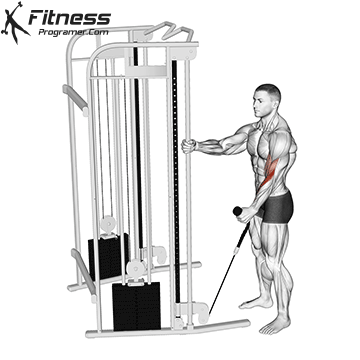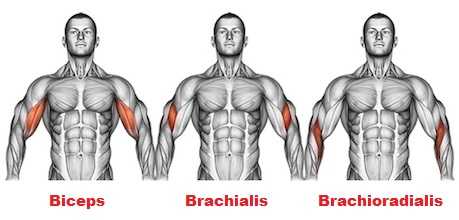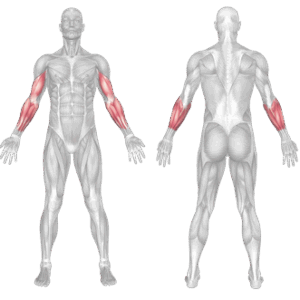Overview
The Cable Single Arm Hammer Curl is an effective unilateral arm isolation exercise designed to target the brachialis, biceps brachii, and brachioradialis muscles through a neutral grip. Utilizing a cable machine ensures consistent resistance throughout the movement, which enhances muscle growth and minimizes the likelihood of using momentum to complete the exercise.
How to Perform Cable Single Arm Hammer Curl (Step-by-Step Guide):

Set the cable to the lowest pulley position and attach a rope or D-handle.
Stand sideways to the machine, grasp the handle with a neutral grip (thumb facing up).
Step slightly away from the machine and brace your core, keeping your arm at your side.
Curl the handle upward, flexing the elbow without rotating the wrist or moving the shoulder.
Squeeze at the top, then slowly lower the handle to the starting position.
Perform 8–12 reps per arm, focusing on control and symmetry.
Tips for Proper Form
Keep your elbow tight to your torso throughout the movement.
Use a neutral grip with your thumb pointing up to emphasize the brachialis.
Do not swing or rotate the torso—stay upright and controlled.
Exhale as you curl, inhale as you return to the bottom.
Focus on time under tension, especially during the lowering phase.
Common Mistakes
Using momentum or leaning back to lift the weight.
Letting the elbow drift forward, shifting tension away from the target muscles.
Rotating the wrist, which changes the movement pattern and reduces effectiveness.
Skipping the eccentric phase, missing out on strength and hypertrophy benefits.
Gripping too loosely, which decreases forearm engagement.
Benefits of the Cable Single Arm Hammer Curl

Isolates the Brachialis: The neutral grip targets this deep muscle for greater arm thickness and definition.
Provides Constant Tension: Cable resistance maximizes muscle activation throughout the full range.
Improves Unilateral Strength: Corrects muscular imbalances between arms for more symmetrical development.
Enhances Forearm Strength: Engages the brachioradialis and wrist stabilizers, contributing to grip performance.
Reduces Momentum: Cables force strict form and slow control, ideal for hypertrophy.
Joint-Friendly Option: Smooth resistance is easier on the elbow and wrist compared to heavy free weights.
Great for Finishing Sets: Ideal as a burnout or accessory movement to isolate the arms after compound lifts.
How to Incorporate Into Your Routine
- For Beginners: Start with 2 sets of 10–12 reps per arm using light resistance and strict form.
- For Hypertrophy: Use 3–4 sets of 10–15 reps with moderate weight to maximize time under tension.
- For Strength: Perform 4 sets of 6–8 reps per arm with heavier weight and full control.
- For General Fitness: Train once weekly to improve grip, arm size, and symmetry.
- For Injury Prevention: Use moderate loads with high control to strengthen the elbow and forearm region.
Muscles Worked

Frequently Asked Questions
Is this better than a dumbbell hammer curl?
The cable version offers constant tension and more control, making it better for isolation and hypertrophy.
Can I do this with a rope or D-handle?
Both work. A rope allows a more natural neutral grip, while a D-handle provides a consistent path.
Which arm should I start with?
Start with your weaker side to ensure balanced development.
How often should I do this exercise?
1–2 times per week is ideal for targeted arm training without overtraining.
Does it help with pull-up or grip performance?
Yes. Strengthening the brachialis and forearms directly supports pulling strength and grip endurance.
